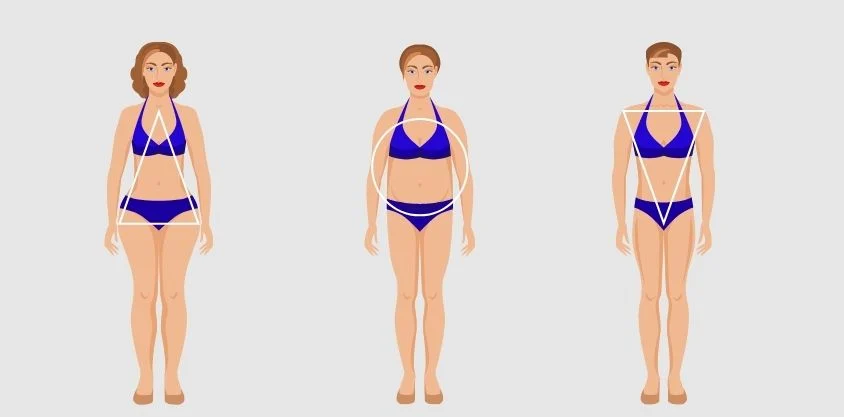Are you an ectomorph struggling to pack on muscle and achieve your fitness goals? If so, you’re not alone. Ectomorphs are often characterized by their slim frames, fast metabolisms, and difficulty gaining weight. While these traits can be advantageous in many ways, they also present unique challenges when it comes to training and nutrition.
Understanding the common pitfalls that ectomorphs encounter can make all the difference in achieving success. In this blog post, we’ll dive into eight crucial mistakes that may be holding you back from reaching your full potential. By recognizing these missteps, you’ll be better equipped to tailor your workout routine and nutritional strategy for optimal results. Let’s explore how you can turn things around!
Common Characteristics of Ectomorphs
Ectomorphs are often characterized by their slender frames and lean physiques. They typically have long limbs, narrow shoulders, and a fast metabolism that makes gaining weight a challenge.
Their body composition usually consists of lower levels of body fat and muscle mass compared to other somatotypes. This can make it difficult for ectomorphs to put on size, leading many to feel frustrated in their fitness journeys.
In terms of energy, ectomorphs may require more frequent meals throughout the day to fuel their active lifestyles. Their quick metabolisms mean they burn calories rapidly, emphasizing the need for consistent nutrient intake.
Additionally, ectomorphs might find themselves drawn more toward endurance activities rather than heavy lifting or resistance training due to their natural athleticism. Understanding these traits is essential when crafting effective workout plans tailored specifically for ectomorphic individuals.
Mistake #1: Not Eating Enough
Ectomorphs often struggle with gaining weight. Their fast metabolism burns calories quickly, making it easy to underestimate their nutritional needs. This can lead to one of the biggest mistakes: not eating enough.
Many ectomorphs believe they can thrive on small meals or skipped snacks. This mindset is counterproductive for muscle growth and energy levels. Without sufficient fuel, workouts may suffer, leading to limited progress in strength and size.
It’s vital for ectomorphs to focus on calorie-dense foods like nuts, avocados, and whole grains. Incorporating protein-rich sources such as chicken, fish, legumes, and dairy is essential too.
Regularly consuming balanced meals throughout the day helps maintain energy levels while supporting muscle recovery after intense training sessions. Prioritizing nutrition isn’t just an option; it’s a necessity for anyone looking to maximize their potential as an ectomorph.
Mistake #2: Focusing Only on Cardio Workouts
Many ectomorphs fall into the trap of prioritizing cardio workouts. While cardiovascular exercises have their benefits, relying solely on them can hinder muscle growth and weight gain.
Ectomorphs naturally have a fast metabolism, which means they burn calories quickly. Excessive cardio can exacerbate this issue, leading to further weight loss instead of the desired gains. It’s crucial to strike a balance between your cardio routine and strength training.
Incorporating resistance training is vital for ectomorphs looking to build muscle. Lifting weights not only promotes hypertrophy but also boosts metabolism in a healthy way.
Instead of endless hours on the treadmill, consider shorter, more intense intervals combined with strategic lifting sessions. This approach will help you develop strength while still reaping some cardiovascular benefits without sacrificing your hard-earned gains.
Mistake #3: Neglecting Strength Training
Many ectomorphs fall into the trap of avoiding strength training. They often believe that lifting weights will make them bulky or slow. This misconception can hinder progress significantly.
Strength training is essential for building muscle mass and increasing overall strength. It’s not just about aesthetics; it also improves metabolism and bone density. Ectomorphs need to focus on compound movements like squats, deadlifts, and bench presses.
These exercises engage multiple muscles at once, leading to more efficient workouts. A structured strength-training routine helps create a balanced physique while boosting confidence in your abilities.
Lifting weights should be incorporated several times a week. The key lies in progressive overload—gradually increasing weight or intensity over time. This approach stimulates growth and fosters long-term results without risking injury.
Embracing strength training is vital for ectomorphs looking to transform their bodies effectively.
Mistake #4: Overtraining and Not Allowing Proper Rest and Recovery
Ectomorphs often have a high metabolism, which can lead them to believe they need to always push harder in the gym. This mindset frequently results in overtraining.
When you’re constantly trying to gain muscle or improve your fitness, it’s easy to overlook rest days. However, recovery is just as crucial as workouts themselves. Muscles grow during the repair process after training, not while you’re lifting weights.
Ignoring signs of fatigue and soreness can derail progress more than any missed workout ever could. It’s important for ectomorphs to listen to their bodies and schedule downtime properly.
Pushing through exhaustion can lead not only to injury but also burnout. Prioritizing sleep and nutrition will yield better long-term results than endless hours at the gym without sufficient recovery time. Balancing intensity with adequate rest creates a sustainable path toward achieving fitness goals effectively.
Mistake #5: Not Tracking Progress and Adjusting Accordingly
One of the biggest pitfalls for ectomorphs is failing to track their progress. Without a clear record, it’s easy to lose sight of what’s working and what isn’t.
When you don’t monitor your gains, how can you know if your training or nutrition plan needs tweaking? It could be that you’re not seeing results because your calorie intake is too low or your workout intensity isn’t sufficient.
Keeping a journal or using an app can help you maintain focus. Document workouts, weights lifted, and body measurements regularly.
Adjustments should be based on these insights. If you’ve plateaued, mix up your routine or increase calorie consumption.
Staying flexible in approach allows you to respond effectively to changes in strength and physique. Progress tracking ensures you’re aligning with your unique goals as an ectomorph.
Mistake #6: Not Incorpor
Ectomorphs often overlook the importance of incorporating a well-rounded training regimen. Many focus solely on one type of exercise, which can limit progress and hinder overall fitness.
Mistake #6 revolves around not including a variety of workouts in their routine. Ectomorphs might gravitate towards cardio or certain lifting styles they feel most comfortable with. However, this singular focus can lead to muscle imbalances and plateauing results.
Incorporating different forms of training—such as high-intensity interval training (HIIT), functional movements, and flexibility exercises—is essential for balanced development. This approach helps build strength, enhance endurance, and improve agility.
By diversifying their workout routines, ectomorphs can stimulate their muscles in new ways, promoting growth where it’s needed most while preventing burnout from repetitive motions. A comprehensive plan that includes various types of exercise will yield better results over time.
Recognizing these common mistakes is crucial for ectomorphs aiming to optimize their training experience. Making small adjustments to nutrition and workout practices can lead to significant improvements in strength gains and body composition. Embracing change may be challenging but is ultimately rewarding on the journey toward achieving fitness goals.













